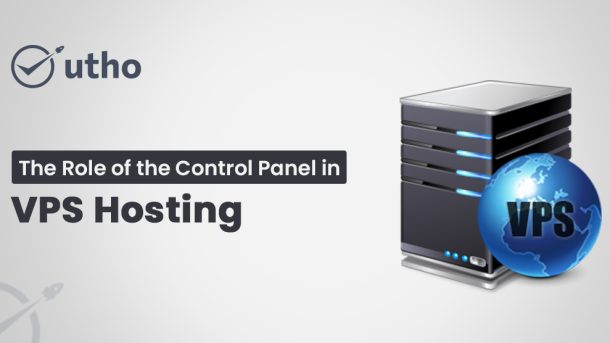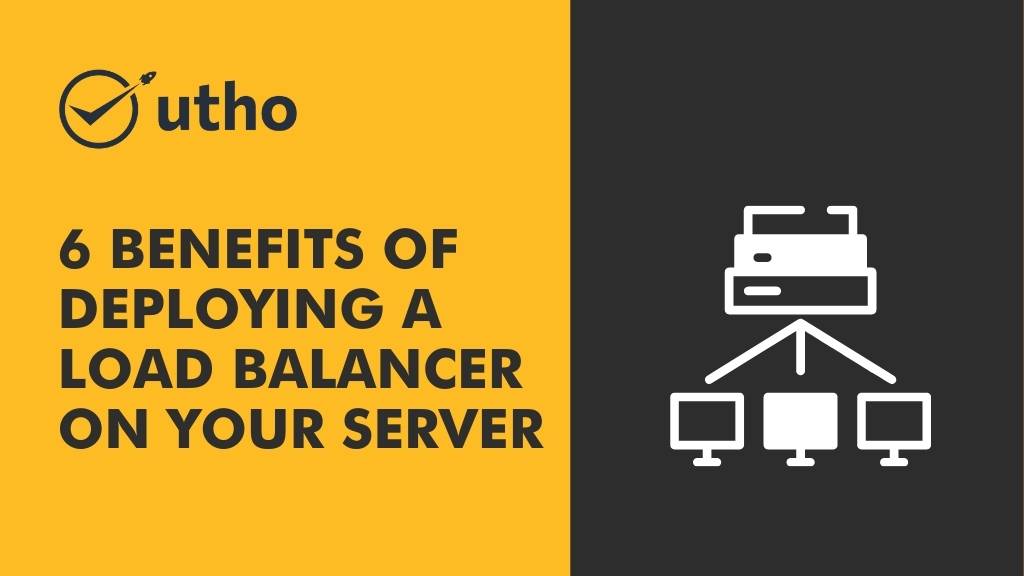VPS (Virtual Private Server) hosting is key for those wanting cheap shared hosting. It offers the control of a dedicated server. A critical component of VPS hosting is the control panel. It is a graphical interface that simplifies managing and configuring server resources. This tool is vital. It helps users maximize their hosting environment's functionality, efficiency, and security. This guide covers the control panel in VPS hosting. It explores its features, benefits, and effects on server management.
What is a control panel in VPS hosting?
A control panel in VPS hosting is a user-friendly interface. It lets admins manage server settings, apps, and resources without deep technical skills. It bridges the gap between the complex server backend and the user. It provides a central platform to manage files and set up domains. It also configures databases and monitors server performance.
Popular VPS hosting control panels include cPanel, Plesk, Webmin, and DirectAdmin. Each has unique features for different users. But they all aim to make server management easy and efficient.
Key Features of a VPS Control Panel
VPS hosting control panels simplify server management. They offer features that meet various admin and operational needs. Here’s an overview of the key functionalities they provide:
Domain Management
Control panels allow users to add, manage, and remove domains and subdomains with ease. They also have DNS management tools. They make it easy to configure records like A, CNAME, and MX. This ensures smooth domain and email operations.
Email Management
Setting up and managing email accounts becomes straightforward with a VPS control panel. Users can create domain-specific email addresses. They can also set up advanced features, like spam filters and autoresponders. They can also set up email forwarding. This helps maintain professional communication and reduce unwanted emails.
File Management
Control panels provide tools for uploading, editing, and organising files via a GUI. Also, integrated FTP support ensures secure file transfers. It makes it easy to handle website content and server data.
Database Management
Creating, modifying, and deleting databases is easier. It often supports popular systems like MySQL, MariaDB, and PostgreSQL. Many panels include tools like phpMyAdmin. They provide an easy method for managing databases and queries.
Application Installation
One-click installers like Softaculous make it easy to deploy apps. You can install popular options such as WordPress, Joomla, or Magento in a short time. This feature is very useful for non-technical users. It helps them set up websites or apps in a short amount of time.
Resource Monitoring
Real-time monitoring tools let users track CPU, RAM, and disk usage. This helps to optimize server performance. Alerts and notifications provide early warnings of possible resource issues. They allow for proactive management.
Security Features
Control panels include robust security features. They have built-in firewalls, SSL certificate management, and IP whitelisting/blacklisting. They also provide options for regular backups and restore points. This ensures data safety and reduces downtime if issues arise.
Customization Options
Advanced users can customize settings, PHP versions, and other variables. Control panels also support scripting and custom apps. They offer flexibility for specific hosting needs.
A VPS control panel is a powerful tool. It helps you manage your hosting environment. It offers features for both basic and advanced needs. This lets users keep high server performance, security, and scalability with little effort.
Benefits of Using a Control Panel in VPS Hosting
The control panel’s role in VPS hosting goes beyond simplifying server management. It offers many benefits that enhance the hosting experience:
1. Ease of Use
Designers create control panels to be intuitive. So, they are accessible to users with minimal technical knowledge. With graphical interfaces and clear navigation, you can do tasks that would otherwise need command-line skills. You can do them in a few clicks.
2. Time Efficiency
A control panel for a VPS cuts admin task time. Automated tools and one-click options streamline processes like software installations, backups, and updates.
3. Enhanced productivity
Control panels let users focus on their core business. They do this by removing the need for technical know-how. For instance, developers can spend more time building apps. They will not have to manage server configurations.
4. Improved Security
Control panels provide strong security. They include SSL management, firewalls, and updates. Many also include monitoring tools that detect and alert users to potential vulnerabilities.
5. Resource Optimisation
Real-time monitoring tools help users identify resource bottlenecks and optimize server performance. For example, if a website gets a traffic spike, users can use the control panel to allocate more resources.
6. Scalability
As businesses grow, their hosting needs evolve. Control panels enable seamless scalability. They allow users to upgrade or change server configurations without downtime.
7. Comprehensive Management
Control panels are an all-in-one solution for managing a VPS hosting environment. They handle everything from domains and databases to email and applications.
Impact of Control Panels on Server Management
Control panels have revolutionised server management by making it more accessible and efficient. Below are some of the ways they impact server management.
1. Simplification of complex tasks.
Without a control panel, server management often needs command-line and scripting skills. Control panels simplify these processes. They allow users to run complex tasks via easy menus and wizards.
2. Automation and Scheduling
Many control panels include automation tools. They schedule backups, updates, and routine maintenance tasks. They cut the risk of human error. They also ensure that they carry out critical processes with regularity.
3. Centralised Control
A control panel is a single dashboard. It manages many domains, email accounts, databases, and more. This centralised approach improves workflow efficiency and reduces the need for many tools.
4. Enhanced Collaboration
For teams managing a VPS, control panels allow for role-based access. This means that we can assign users permissions based on their roles. This ensures secure and efficient collaboration.
5. Faster troubleshooting
Control panels often include diagnostic tools that help identify and resolve issues on time. Logs, resource monitors, and error trackers provide insights. They can help troubleshoot problems.
Choosing the Right Control Panel for VPS Hosting
The control panel can have a significant impact on the user experience in VPS hosting. Factors to consider include:
1. Ease of Use
Look for a control panel with an intuitive interface and clear navigation. Features like drag-and-drop file management and one-click installers can enhance usability.
2. Compatibility
Check that the control panel is compatible with your server's OS (Linux or Windows). It must support the apps you plan to use.
3. Performance
Opt for a control panel that is lightweight and optimised for performance. A resource-heavy control panel can impact server speed and responsiveness.
4. Security
Choose a control panel with strong security. It should have regular updates, SSL support, and firewalls. Advanced options like two-factor authentication (2FA) add an extra layer of protection.
5. Cost
While some control panels are free, others need a subscription. Check the pricing. It should fit your budget and needs.
6. Community Support
A control panel with a strong user community is very valuable. It helps with troubleshooting and learning. Good documentation adds to its value.
Popular Control Panels for VPS Hosting
The right control panel can have a significant impact on managing a VPS. These tools simplify complex server tasks. They also cater to different needs and expertise levels. Here’s a closer look at some of the most popular control panels used in VPS hosting:
1. cPanel/WHM
cPanel/WHM (WebHost Manager) is the gold standard for Linux servers. Many hosting providers and users prefer it. Its intuitive interface makes it easy to manage a server. You can set up email accounts and install web apps. Apps like WordPress and Magento have a one-click installer. It makes them easy for even the least tech-savvy users. Also, cPanel's strong security features make it a great choice for safety-minded businesses. It has automatic backups and SSL certificate integration.
2. Plesk
Plesk’s versatility is one of its strongest attributes. Unlike cPanel, Plesk works on both Linux and Windows servers. So, it's popular with businesses using different operating systems. The designers made its clean, user-friendly interface for beginners and professionals. Plesk also integrates with tools like Docker and Git. This makes it ideal for developers. Plesk's features ensure efficiency for any operation. They work for both small sites and multi-server enterprises.
3. Webmin
For those who prefer open-source solutions, Webmin is a fantastic option. As a free control panel, it has many features. These include user account management, resource monitoring, and firewall configuration. Webmin offers extensive customisation options. Users can tailor its interface and features to their needs. Its steep learning curve makes it better for users with a solid tech background. Webmin's active community and documentation make it a good choice. But you must invest time to learn it.
4. DirectAdmin
DirectAdmin is a lightweight, fast, and efficient control panel designed for simplicity. Its minimal design is perfect for users with basic hosting needs or limited servers. DirectAdmin streamlines operations but includes key features. It manages email, files, and databases. It is excellent for users who want speed and reliability. They want to avoid the complexity of more feature-rich panels.
5. ISPConfig
ISPConfig is another open-source control panel that caters to Linux servers. It is popular with users managing multiple servers. It can control them from a single interface. ISPConfig supports many services. They include web server management (Apache and Nginx), email setup, and DNS management. Its docs and active community support make it appealing. It's a great, low-cost, powerful solution.
At Utho, we know that efficient server management is vital to your business's success. That's why we offer high-performance VPS hosting with cPanel, the top control panel. Utho's VPS servers give you dedicated resources. You can scale as your business grows. cPanel simplifies admin tasks. You can manage domains, emails, files, and apps through an easy-to-use interface. It simplifies the process. We commit to cost-effective solutions. They will give you top performance without exceeding your budget. Experience the synergy of robust VPS hosting and easy management. Utho's cPanel-equipped servers will empower your online efforts.
Conclusion
The control panel is a vital tool in VPS hosting. It lets users manage their servers efficiently and securely, with little technical skill. Control panels bridge the gap between raw server power and user needs. They do this by simplifying complex tasks, boosting security, and enhancing productivity.
A good control panel can transform your VPS hosting. It can make it easier and more effective. This is true for small business owners, developers, and enterprises. Utho offers VPS hosting. It integrates with top control panels. You get the tools and support to succeed in your hosting journey. Utho's hosting solutions can help you unlock your VPS's full potential. They include real-time monitoring, automated backups, and intuitive interfaces.




